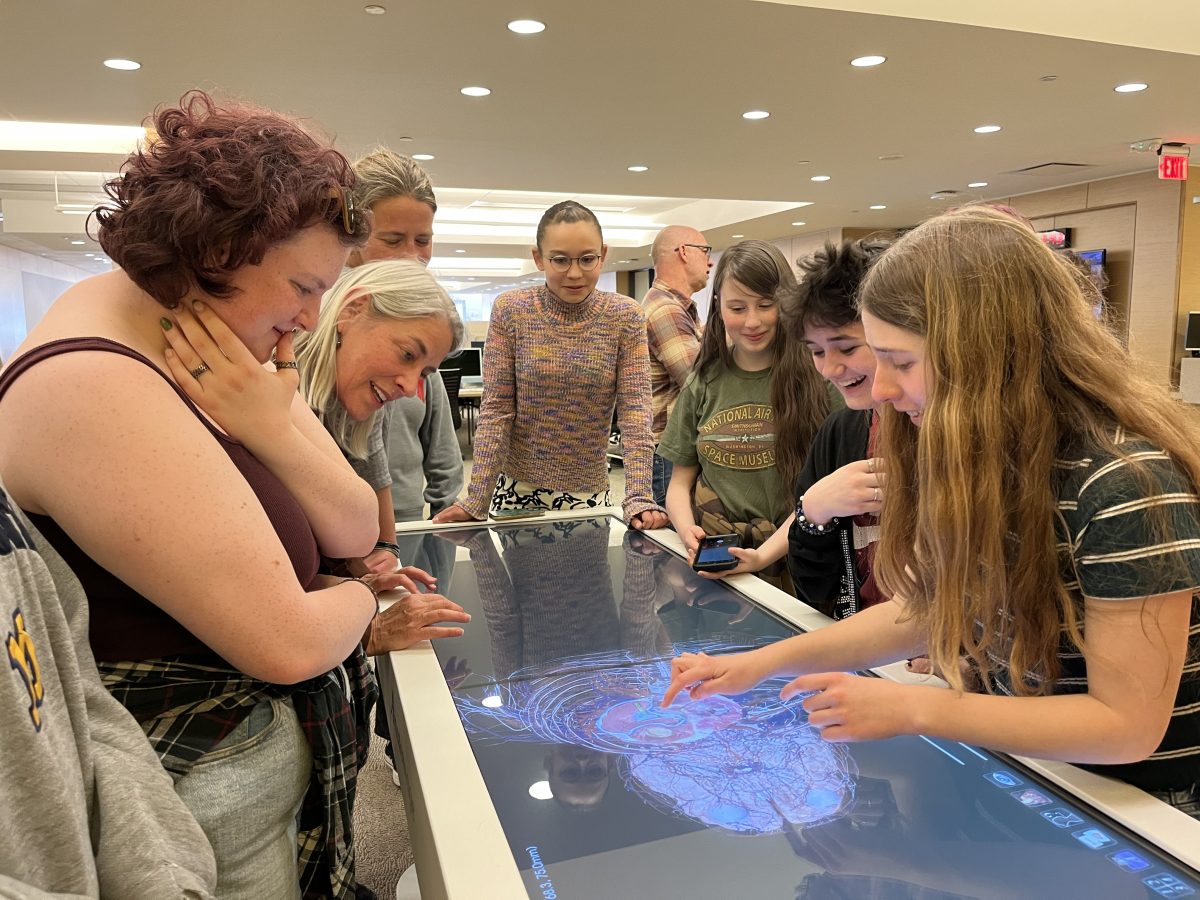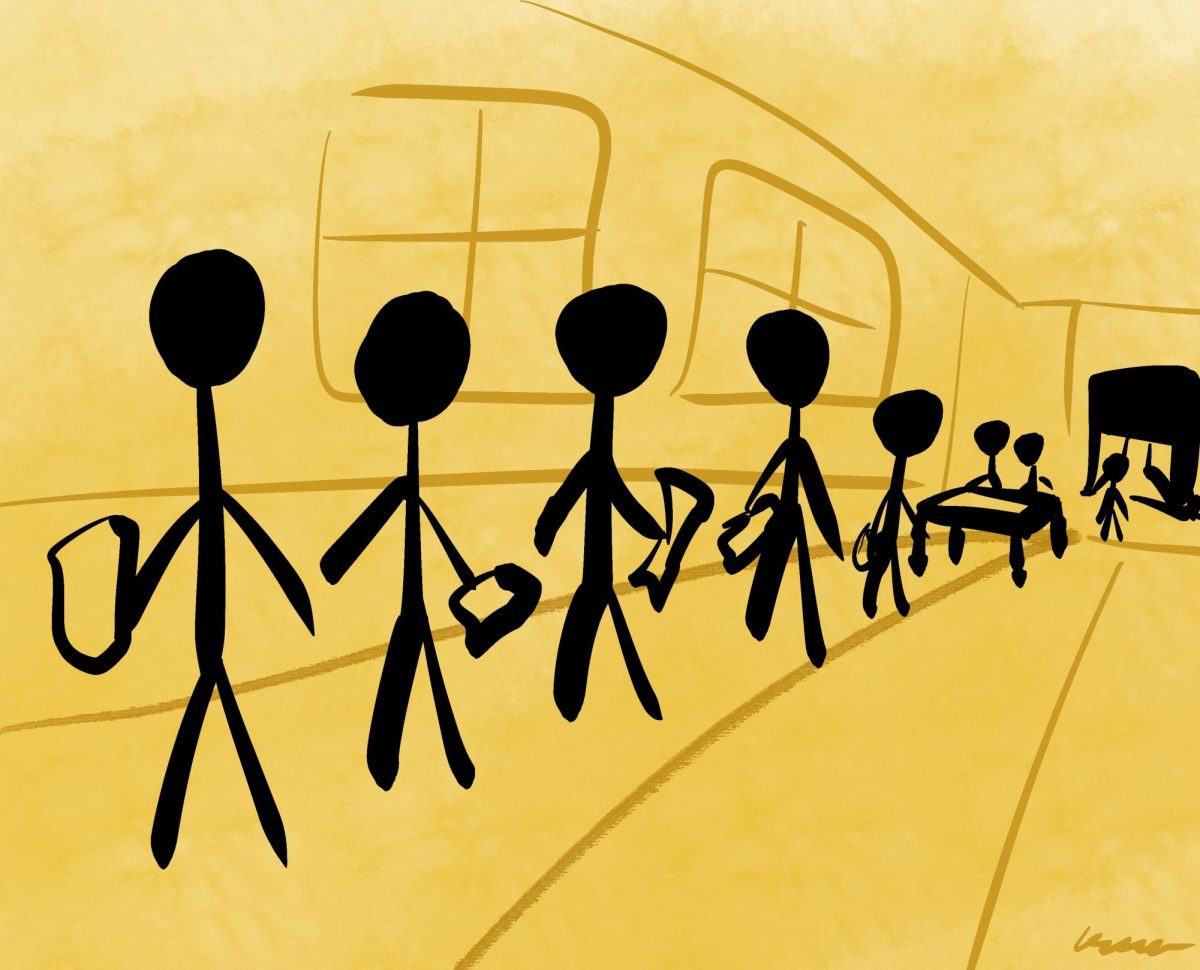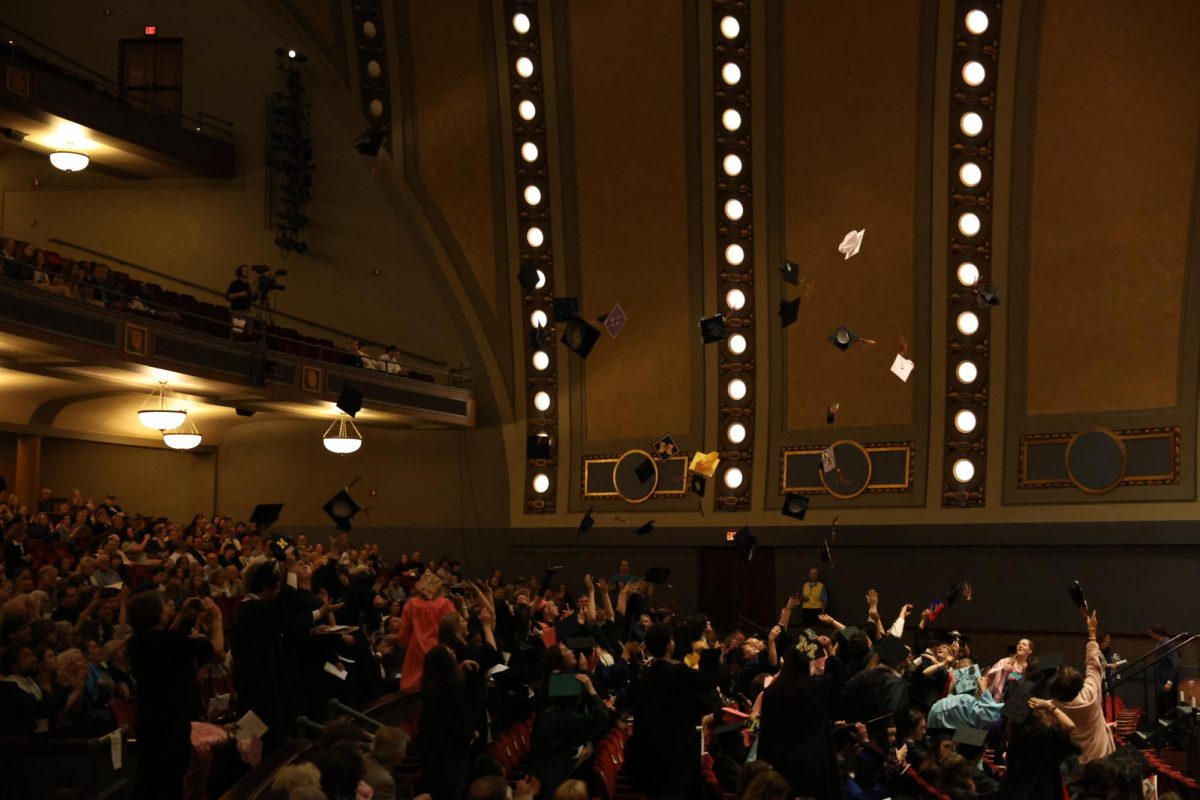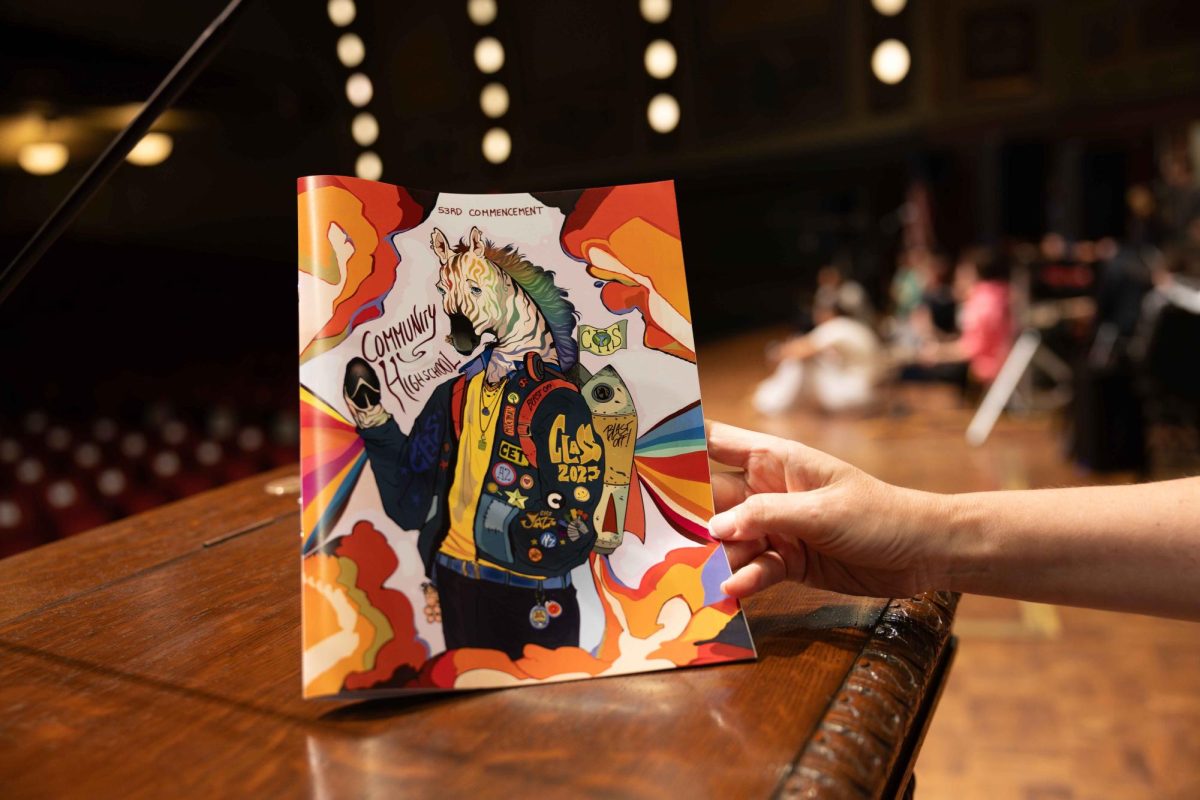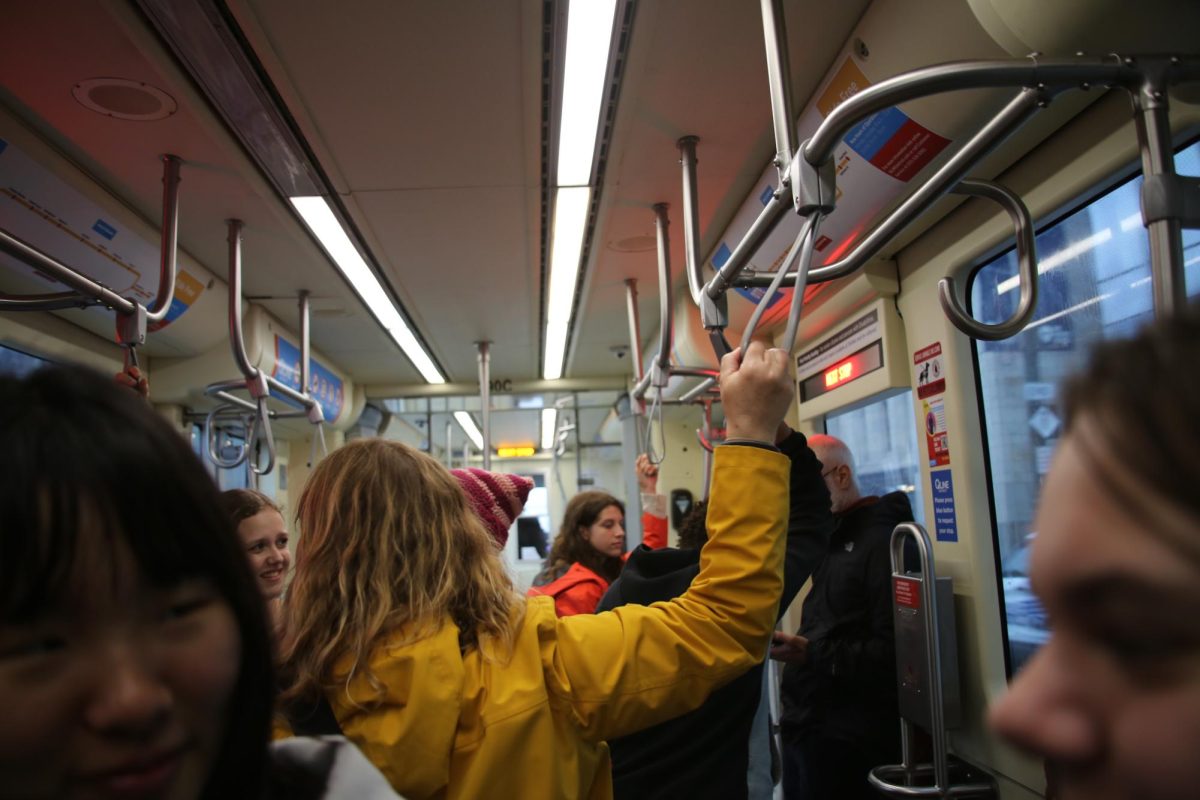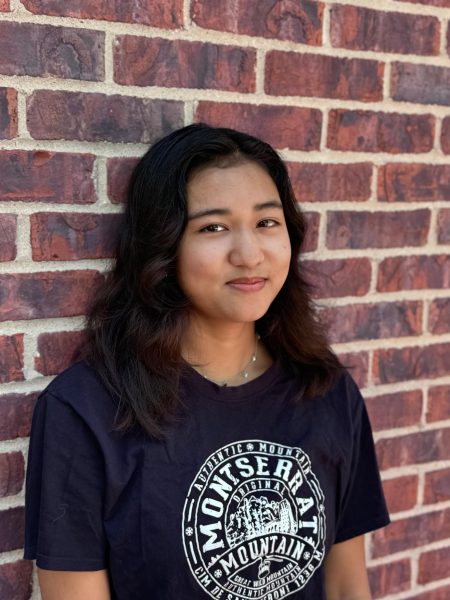In late April, students from Marcy McCormick’s FOS II and FOS III classes took an hour-long field trip to the University of Michigan’s Taubman Health and Sciences Library to explore an advanced imaging technology called the Anatomage. The Anatomage is an anatomy platform featuring precise 3D reconstructions of real cadavers and offering unique skills and abilities for exploration beyond what is traditionally available.
Emma Zeller, one of Marcy McCormick’s FOS II students, is the daughter of a scientist who brought FOS this opportunity. Her mother, Marina Pasca di Magliano, is a professor and researcher at the Michigan Cancer Center. Pasca di Magliano has been working on a mouse gene-modification project with surgeons and graduate students to learn how to create more effective treatments for pancreatic cancer.
Zeller sees the Anatomage as an opportunity to look closer at the human body. It allows people to take a closer look at themselves, projecting their view of the cadavers onto their own bodies. Observing cadavers with causes of death like cancer and car crashes can inspire others to take preventive measures like going to checkups and wearing a seatbelt. The best part is that this technology is available to all, provided that those interested call the Taubman Center and schedule a time to check it out.
Charlotte Rotenburg, a junior in Marcy’s FOS III class, decided to go on the trip on the spur of the moment. She grew up doing science projects with her mom and was delighted to learn about the field trip and be able to tag along. Rotenburg enjoyed using high-resolution imaging to isolate different body systems and examine them individually, something that wouldn’t be possible in a physical dissection.
“I was like, ‘Let’s slice this bone’, and I was like, ‘Look, guys, that’s the bone marrow’,” Rotenburg said. “And I was like, ‘Look, look in the brain,’ and then we got to put it back together.’”
Rotenburg found it amazing that high school students got a chance to check out technology used as a resource by students in medical school and she was excited to go home and share her experience with her mom. Rotenburg recommends that anyone who has the opportunity to go should take advantage of it, especially if they are interested in going into the medical field.
Community High School’s forensics teacher, Liz Stern, was also on the field trip. Stern thought that the Anatomage field trip aligned with the content her students were learning in class — except that her students were learning about fetal pigs.
“The whole second semester is all about how to figure out the cause, mechanisms of death and time of death,” Stern said. “And so, one of our final things that we do is take a look at the internal organs so that it would be much like what you would do for an autopsy. And pig anatomy is very similar to human anatomy. So there are a lot of things that we can learn from the fetal pigs to apply to humans.”
Stern was blown away by this incredible piece of technology. She was shocked at how specifically they could render the different layers of the organs up through the mesentery and the fascia and that you could take it all away with a swipe of a finger and see the bones underneath.
“It was just so flexible,” Stern said. “And I loved that it was actual people who had donated their bodies for this.”
When working with her students, Stern emphasizes that the fetal pigs are actual organisms and that it is important to be conscious of that fact. Stern sees the Anatomage as a beautiful, respectful, and versatile way to visualize things for people.
“I think it really adds a layer to people’s education,” Stern said. I think the Anatomage is a way of really learning and having the ultimate respect for individuals who have made that sacrifice to donate their bodies to science.”
With the Anatomage technology, students had the chance to dive deep into anatomy and medical imaging in a way that is impossible in a classroom setting. This field trip allowed students to explore their interests and expand on possible career opportunities. Consider scheduling a visit to the Taubman Health and Sciences Library to experience firsthand the wonders of this innovative technology and embark on a journey of discovery unlike any other.



